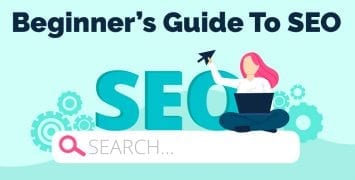No matter what product or service you provide, you have competitors. No matter if you’re the smallest organization in the industry or the biggest dog on the block, you always need to know what your rivals are up to.
Are you spending enough time keeping up with your competitors? Do you know what to look for? I’m here to help with a complete guide to SEO competitor analysis:
The Benefits of Analyzing the SEO of Rival Companies
Here’s what you want to learn about your competitors:
- What do they excel at?
- Where do they come up short?
- What other sites do they link to?
Finding that information is actually pretty simple:
1. How to Find Your Competitor’s Keywords
This can be done with a simple Google site search. Entering “site:competitorswebiste.com” into Google will show you all of their pages, plus Meta Data. These Meta Tags are what you’re looking for, since that’s where you’ll find the keywords each page is optimized for.
2. How to Analyze Their On-Site SEO
There’s a lot to learn from your competitor’s SEO strategies. You can position your own strategy to capitalize on their mistakes. Also, you might notice some strategies that you need to implement on your own sites.
Try to find as much of the following as you can:
- Keyword Density – How well does each page rank? This will tell you what density you’ll need for your own pages in order to stay competitive.
- META info – How is their written data? Do they use LSI keywords? You’ll want your pages to have better copy and a more engaging call-to-action than your competition.
- Internal Linking – What’s their model for allowing equity to flow through their site? Strong site architecture increases authority while decreasing the links needed for ranking.
3. What to Look for in the Competition’s Content
Your competition likely has a blog section. If they don’t, congratulations! You can quickly overtake them in the search results by dedicated your time and resources to creating a blog section for your own site.
If your competitors have blog pages of their own, you’ll want to check out what kind of content they’re creating. Are they finding an audience? What’s the average length of their posts, and what types of topics do they cover?
Aside from blog posts, you’ll want to also check out their non-written content such as videos, podcasts and whatever else they offer their readers. You might want to sign up for any newsletters or other info they provide (although you probably want to use an email address which doesn’t contain your brand name).
4. How to Analyze Their Contact Page
Most contact pages aren’t optimized as fully as they could be. You want to identify any weaknesses on your competitor’s contact pages and then make your pages better.
Keep forms short. Only ask for the information you directly need, which is usually just a name and an email address. People tend to not fill out a form at all if the form has too many fields. Check out my Contact Page for an example of a short, easy form.
Also, take note of your competition responds to customer questions. If they state a response time, try to be faster. Most leads grow cold within about one business day. Ideally, you want to respond to a potential customer within a few hours at the most.
5. Analyze Their Social Media
Social media will help build brand awareness and customer relationships. Check out your competition on Twitter, Facebook and any other platforms.
How active are your competitors on social media? Do they post daily, weekly or without any sort of set schedule? Generally, you want to post something significant to Facebook and Twitter two to three times a week. Significant content includes things like original blog posts and images.
You want to post filler content daily or even twice a day. This still content that your readers will find useful, but it’s not content that you create yourself. Mainly these will be articles about industry news which you’ll share and/or re-tweet. Check out Using Social Media to Generate Sales for more advice.
At the end of the day, only you are responsible for your company’s success. If you don’t provide great products backed by excellent customer service, what your competition is up to won’t really matter.
But when your business is ready to compete, you need to check out your competition. Focus on the five areas above in order to accurately assess what your competition is up to SEO-wise. This will help you stay one step ahead!




